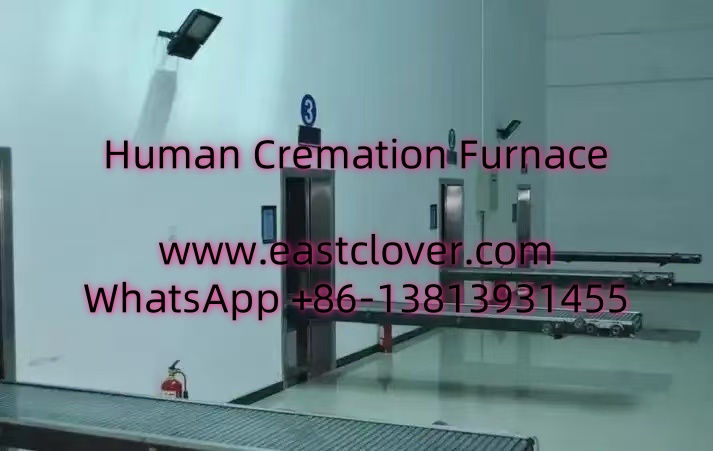Introduction to Human Cremation Furnaces
Cremation is a widely practiced method for the final disposition of human remains, relying on specialized furnaces designed to handle the complex physical and chemical processes involved. Modern cremation furnaces, also known as cremators, combine advanced engineering with stringent operational protocols to ensure efficiency, environmental compliance, and respect for the deceased. This news explores the various models of cremation furnaces, their technical specifications, operational procedures, and addresses common questions about the process.
Cremation Furnace Models
Cremation furnaces are categorized based on design, fuel type, and capacity. Below are the primary models in use today:
1. Primary Cremation Furnaces
These are the most common types, designed to handle a single body per cycle. They are further divided into:
- Gas-Powered Furnaces: Utilize propane or natural gas for combustion. They dominate the market due to their efficiency and rapid heat-up times.
- Electric Furnaces: Less common due to higher operational costs, but valued for cleaner emissions and precise temperature control.
- Dual-Fuel Furnaces: Hybrid systems that can switch between gas and electricity, offering flexibility in energy sourcing.
2. Secondary Combustion Furnaces
These systems include a secondary chamber to reburn exhaust gases, significantly reducing particulate emissions and harmful pollutants. They are mandatory in regions with strict environmental regulations.
3. Multi-Body Cremation Furnaces
Larger units capable of cremating multiple bodies simultaneously. These are rare and typically used only in emergencies or mass-fatality events.
Technical Specifications
Modern cremation furnaces incorporate advanced technologies to meet operational and regulatory demands:
Combustion System
- Temperature Range: Operate between 1,400°F to 1,800°F (760°C to 980°C) to ensure complete decomposition of organic matter.
- Burners: High-efficiency burners with modulating controls to maintain consistent heat.
- Refractory Lining: Heat-resistant materials like ceramic fiber or firebrick line the chamber to retain heat and protect the furnace structure.
Emission Control Systems
- Secondary Chambers: Reheat gases to 2,000°F (1,100°C) to break down pollutants like dioxins and carbon monoxide.
- Scrubbers and Filters: Remove particulate matter, mercury (from dental amalgams), and acidic gases before release into the atmosphere.
Automation and Monitoring
- Computerized controls track temperature, airflow, and combustion efficiency.
- Safety interlocks prevent door opening during active cycles to protect operators.
Operational Procedures
Cremation follows a strict sequence to ensure safety, efficiency, and dignity:
Pre-Cremation Preparation
- Verification of permits and identification of the deceased.
- Removal of non-combustible materials (e.g., jewelry, pacemakers).
Loading and Combustion
- The body is placed in a combustible container or casket.
- The furnace is preheated, and the chamber door is sealed.
- Burners ignite, and the primary cremation phase begins (1-3 hours).
Post-Cremation Processing
- Cooling of remains (cremated bones, or “cremains”).
- Processing via a cremulator to pulverize bone fragments into ash.
- Transfer of ashes to an urn or container for the family.
Environmental and Regulatory Considerations
Modern cremation furnaces must adhere to environmental standards such as the EPA’s Clean Air Act in the U.S. or the European Union’s Industrial Emissions Directive. Key compliance measures include:
- Continuous emission monitoring systems (CEMS).
- Use of low-NOx burners to reduce nitrogen oxide emissions.
- Proper disposal of mercury and other hazardous residues.
www.southclover.com
Cremation furnaces have evolved into sophisticated systems that balance operational efficiency with environmental stewardship. From gas-powered primary chambers to advanced secondary combustion units, these technologies ensure that cremation remains a viable and respectful option for end-of-life services. Ongoing advancements in automation, emission control, and energy efficiency will continue to shape the industry, addressing both ecological concerns and the needs of bereaved families.
FAQs
How long does a typical cremation take?
The process varies based on body weight and furnace type, but most cycles last 1.5 to 3 hours.
Are emissions from cremation harmful?
Modern furnaces with secondary chambers and scrubbers reduce pollutants to levels compliant with international standards.
Can families witness the cremation?
Many facilities offer viewing rooms, but safety protocols restrict physical access to the furnace area.
What happens to medical implants or prosthetics?
Non-combustible materials like titanium joints are removed post-cremation and recycled where possible.
How much energy does a cremation furnace use?
A single cremation consumes roughly 28-40 kWh of energy (gas equivalent), comparable to a 500-mile car trip.

Comments are closed